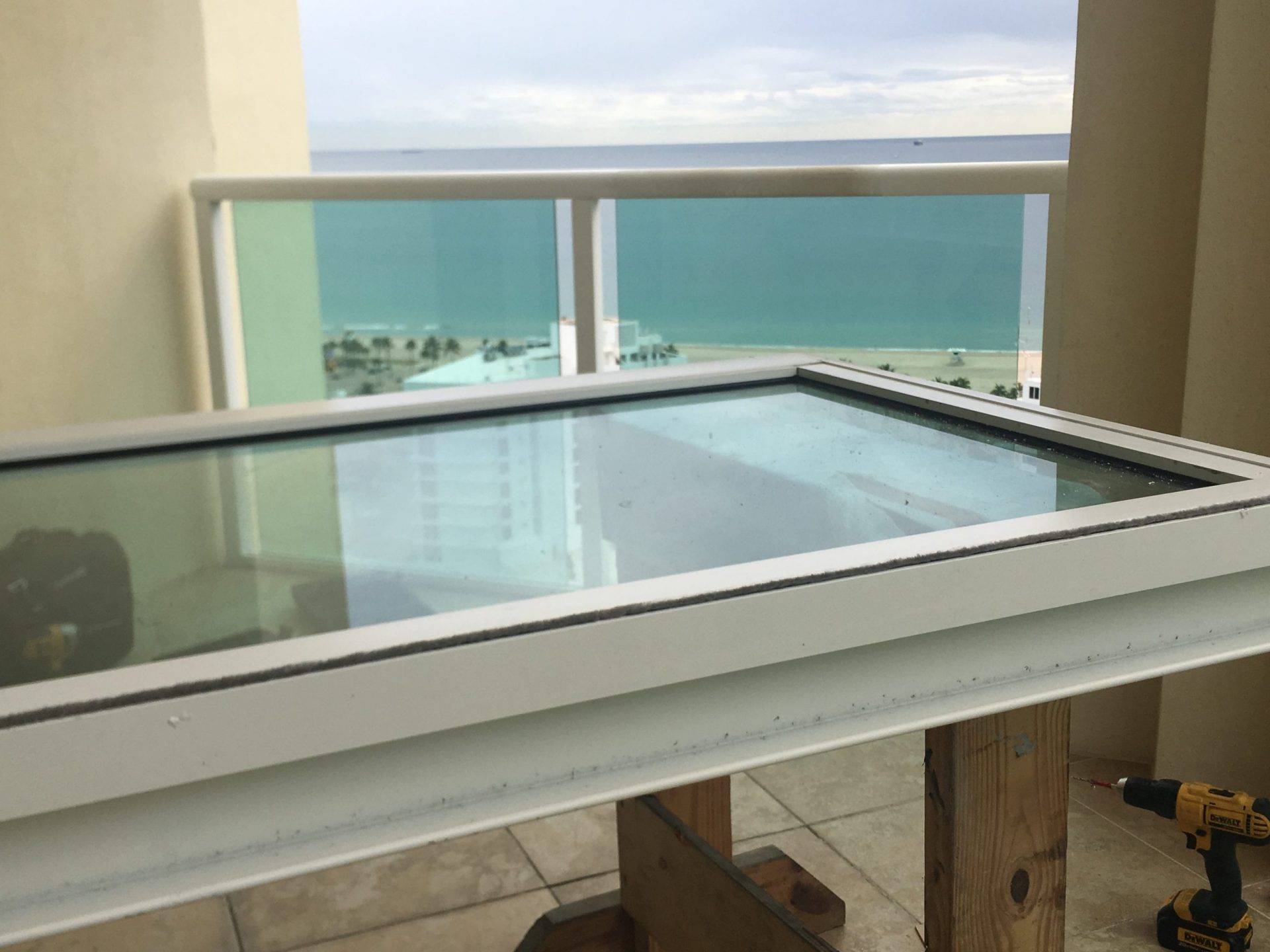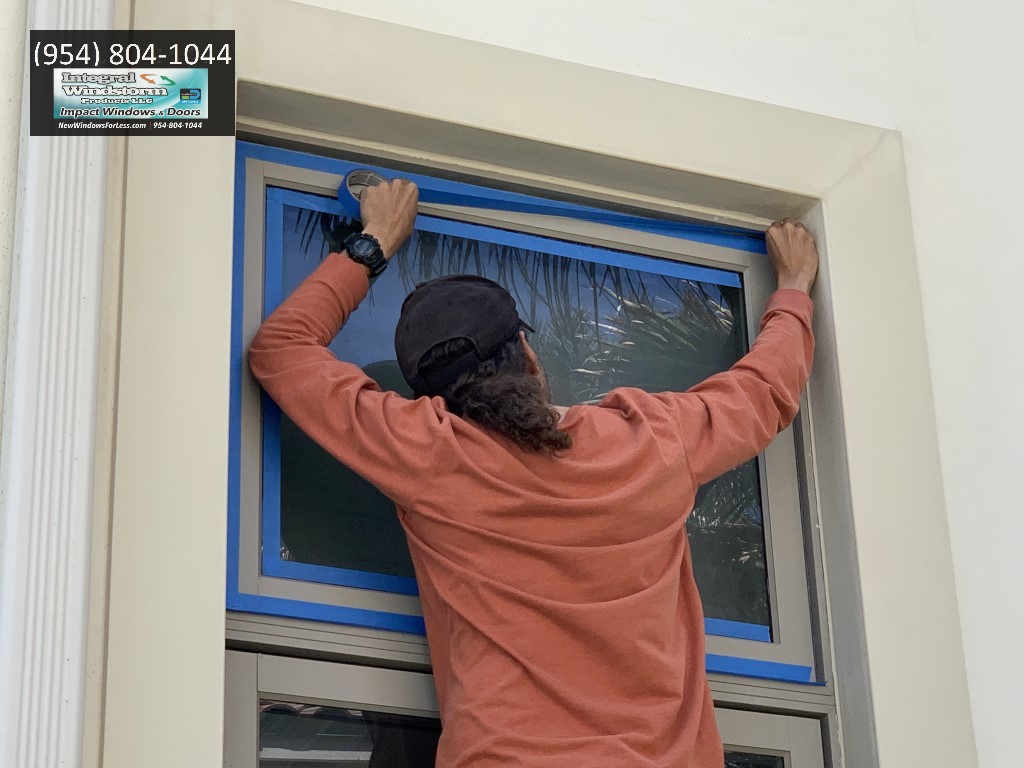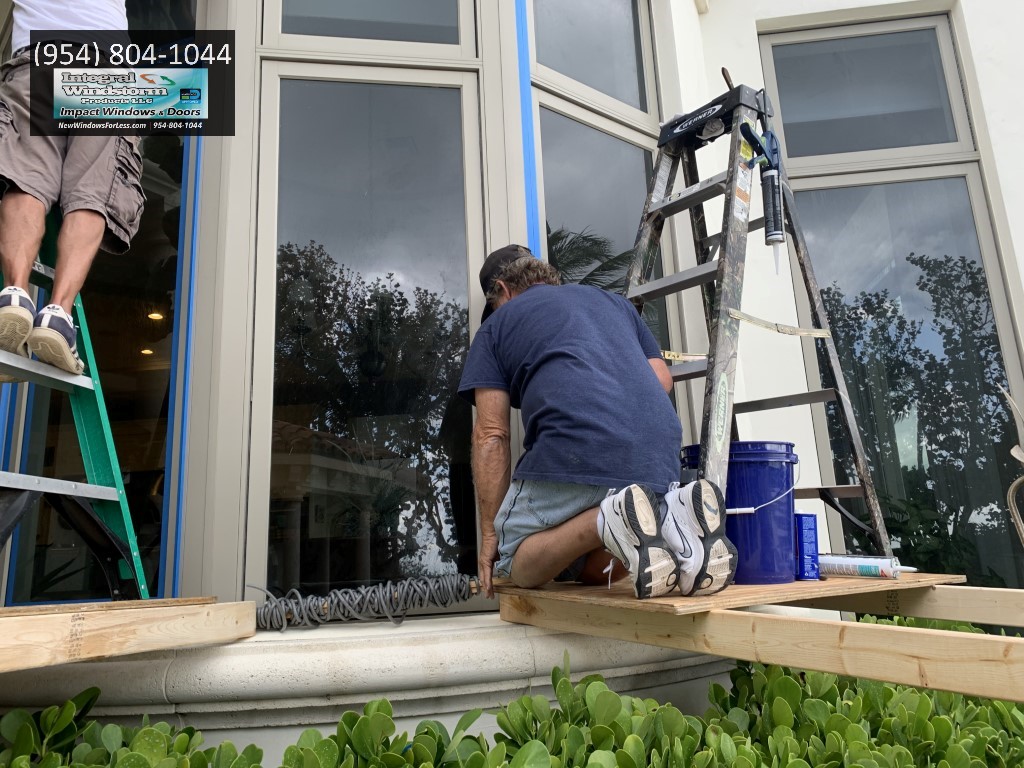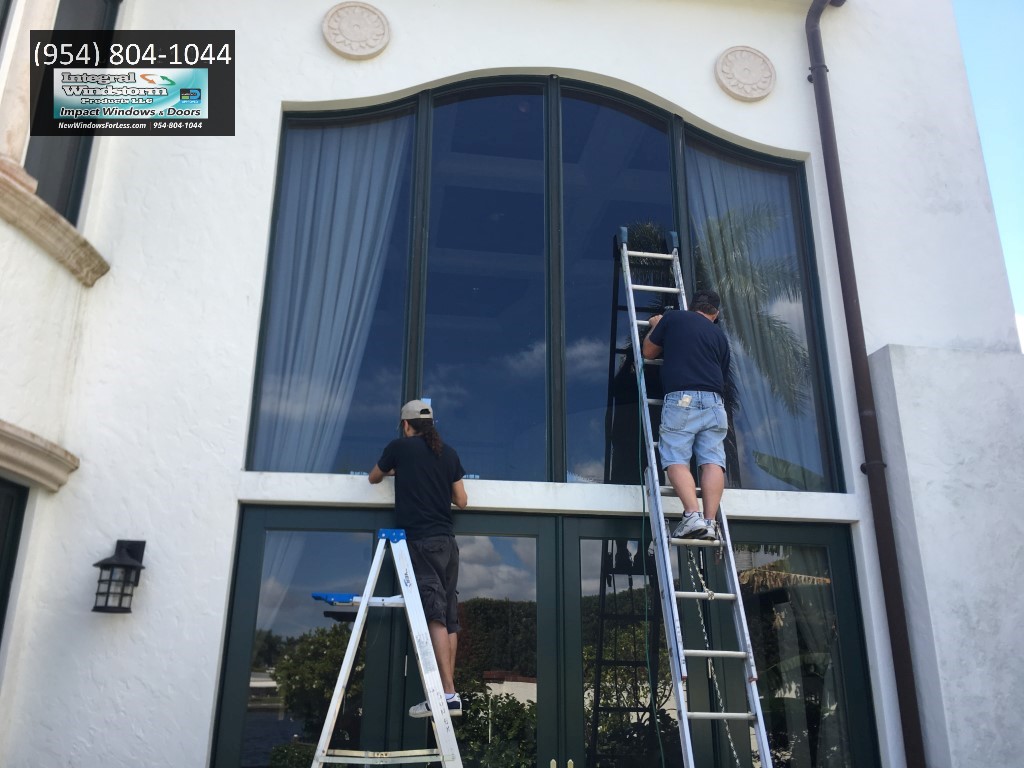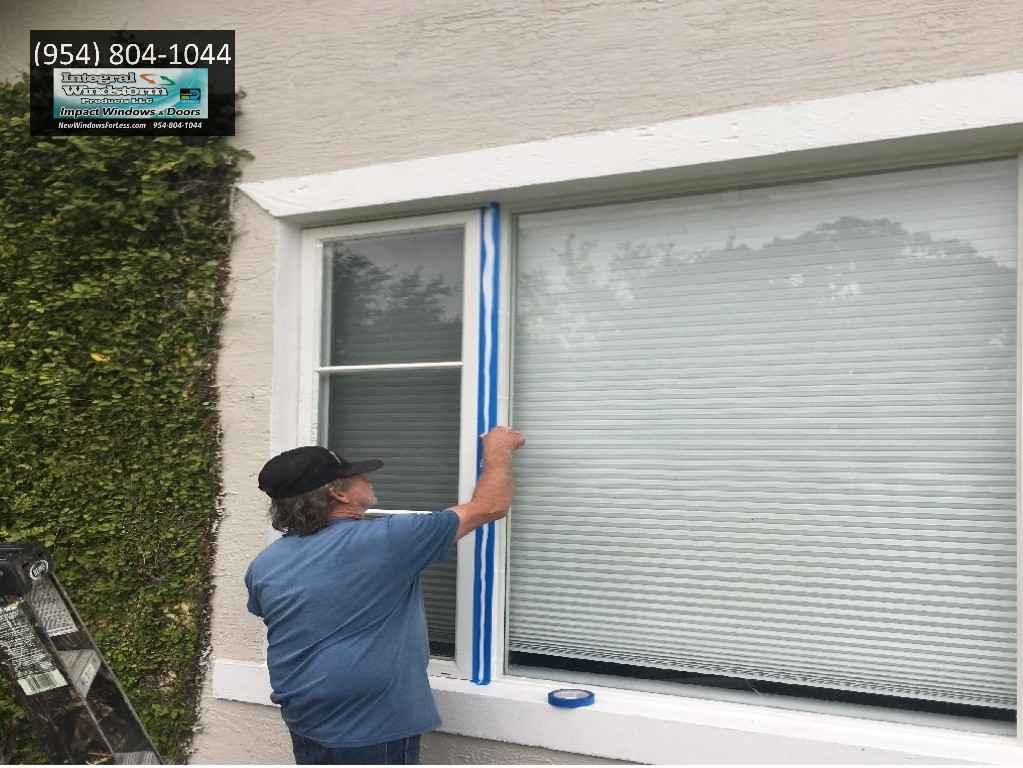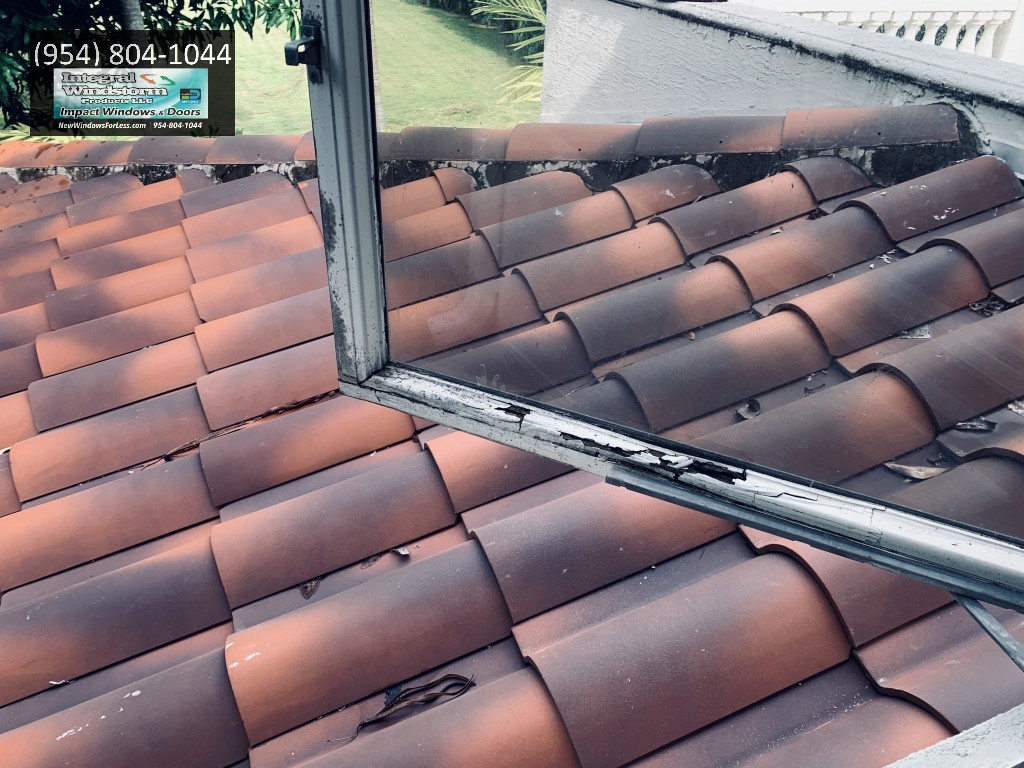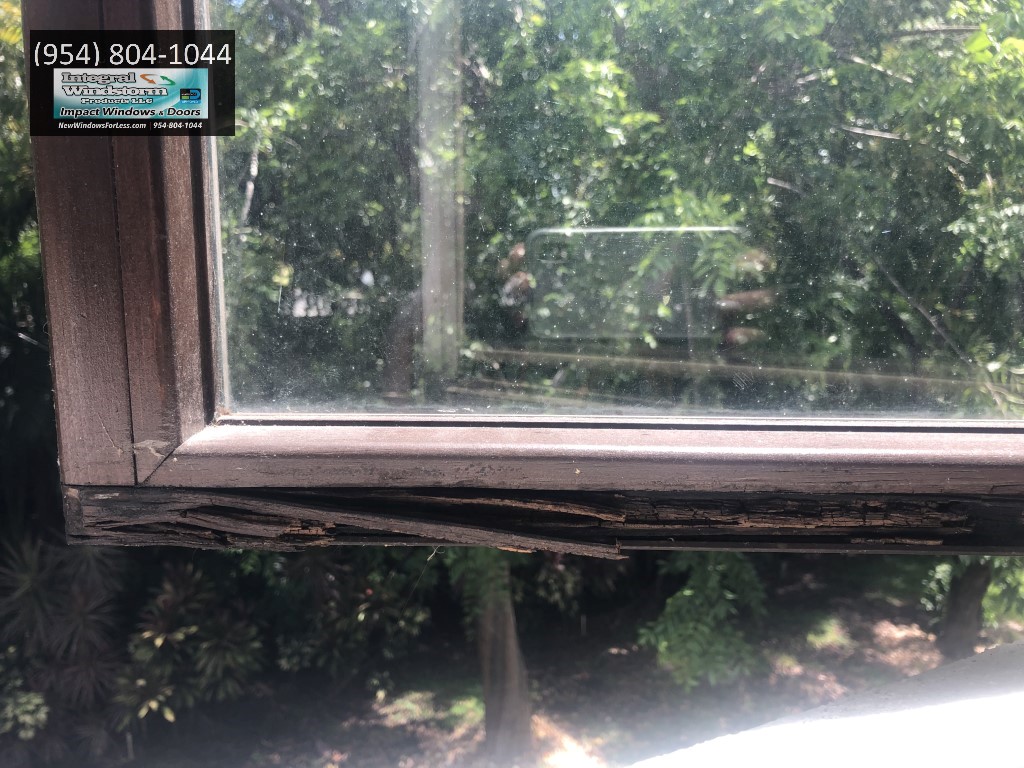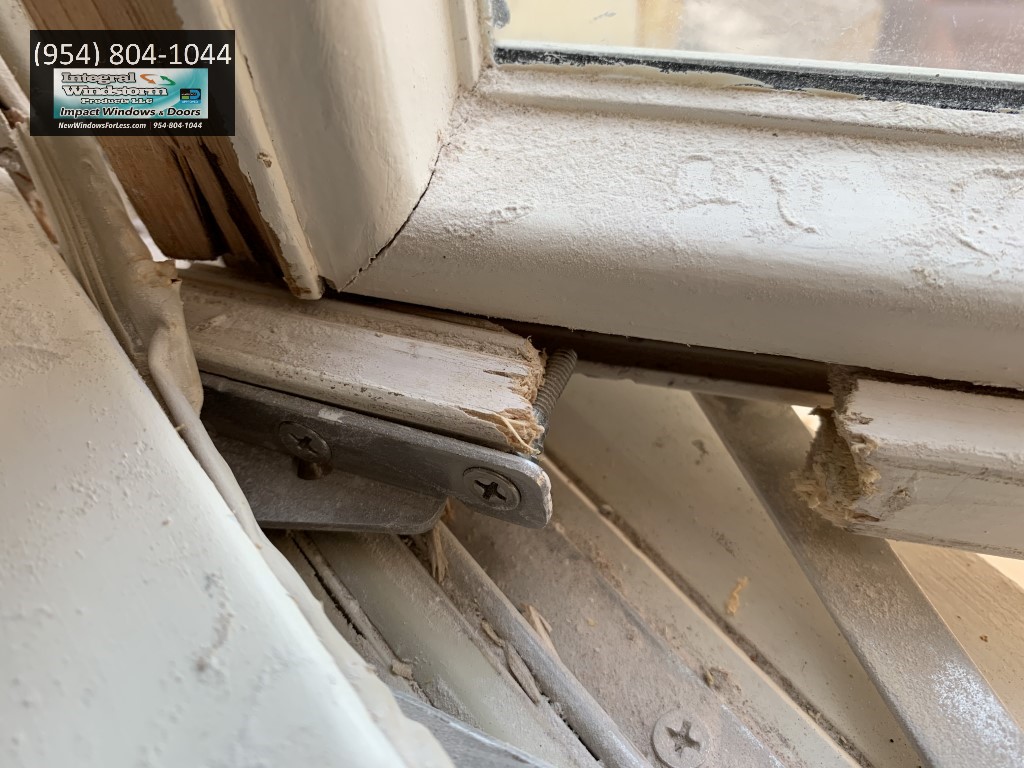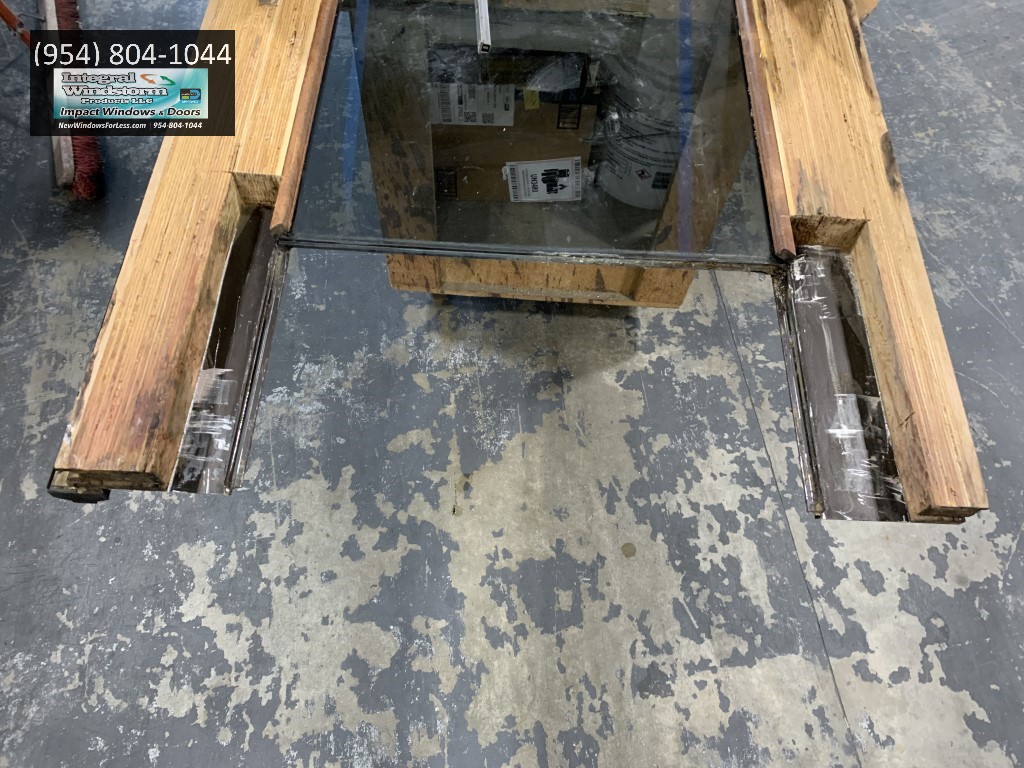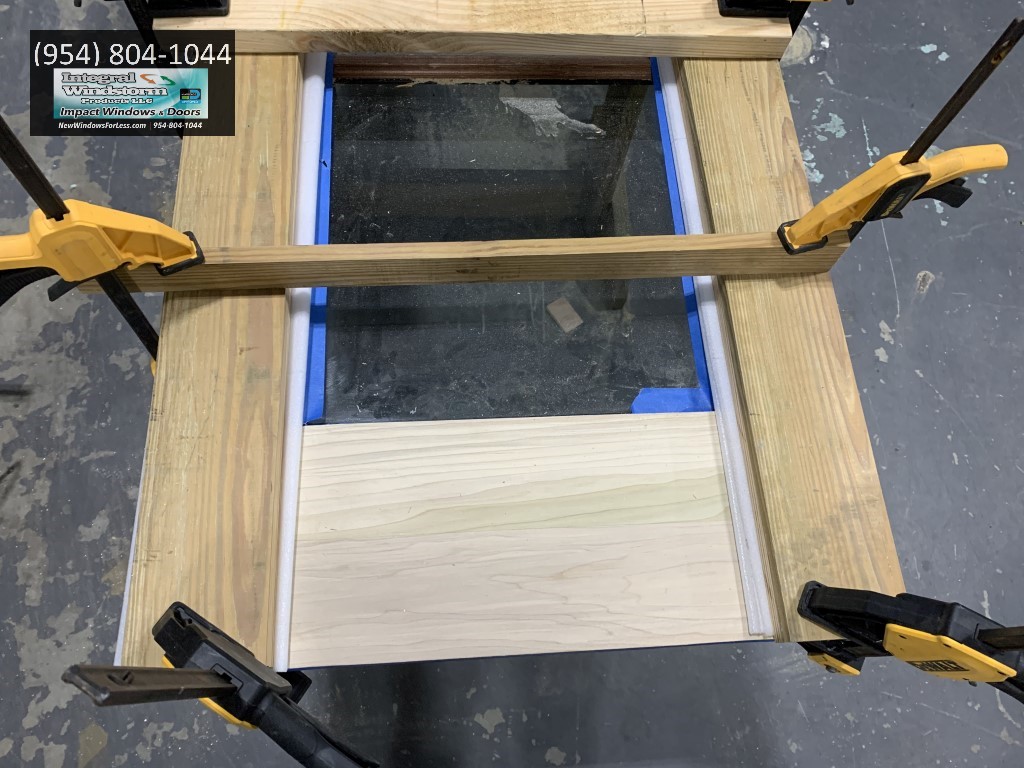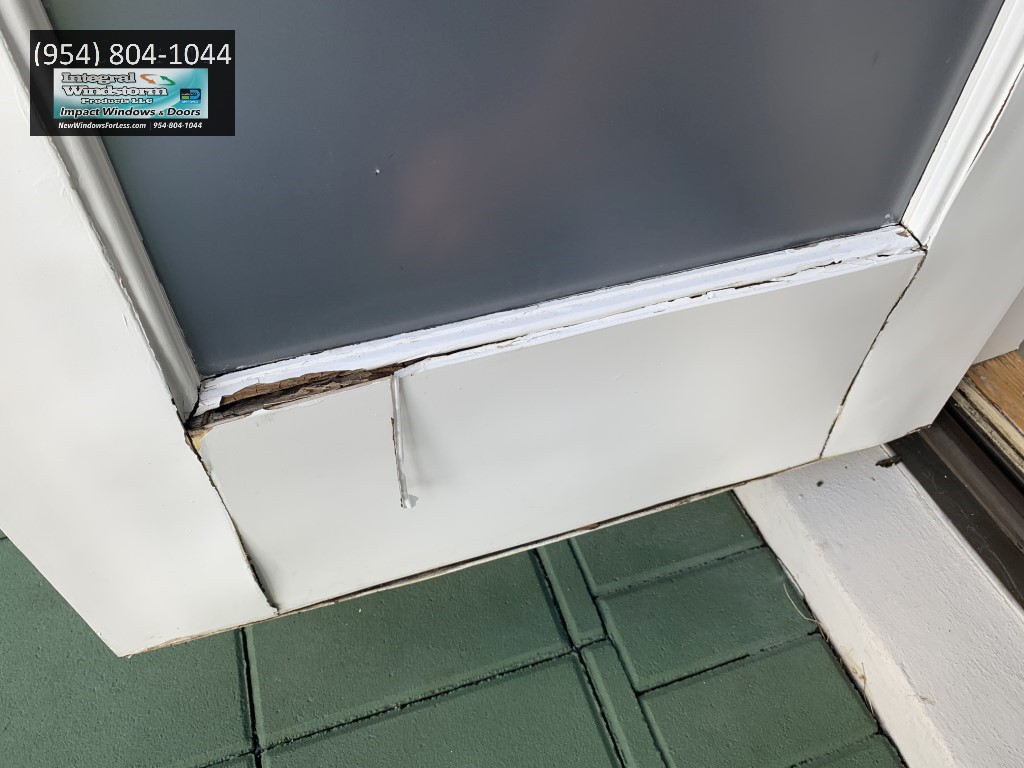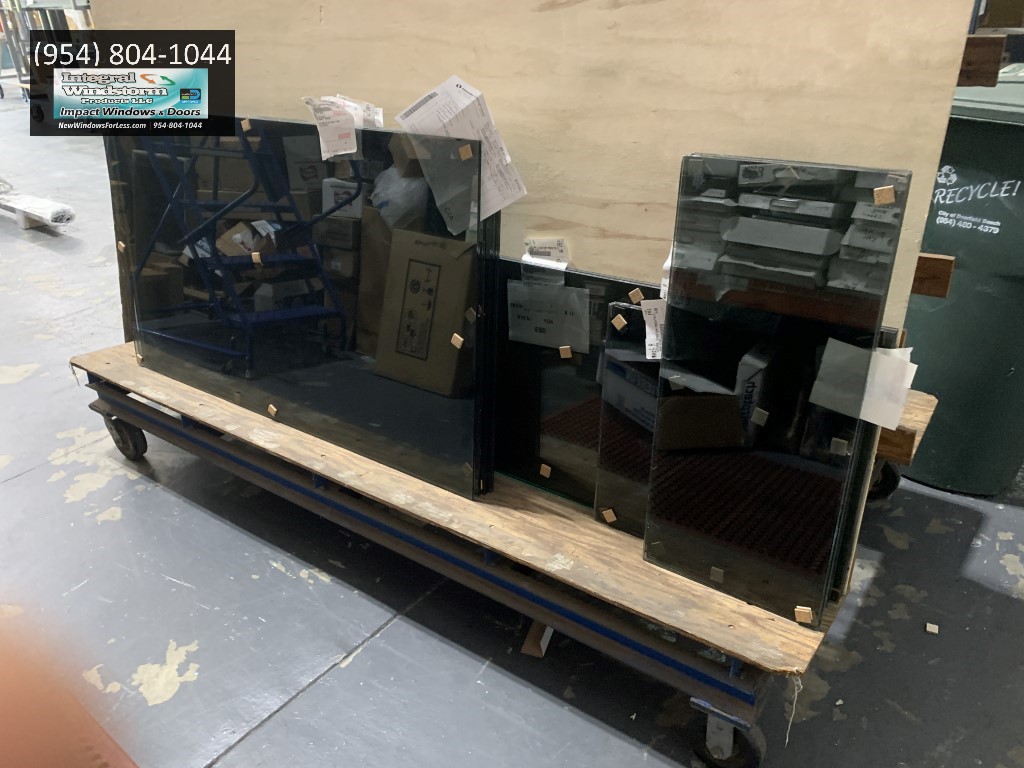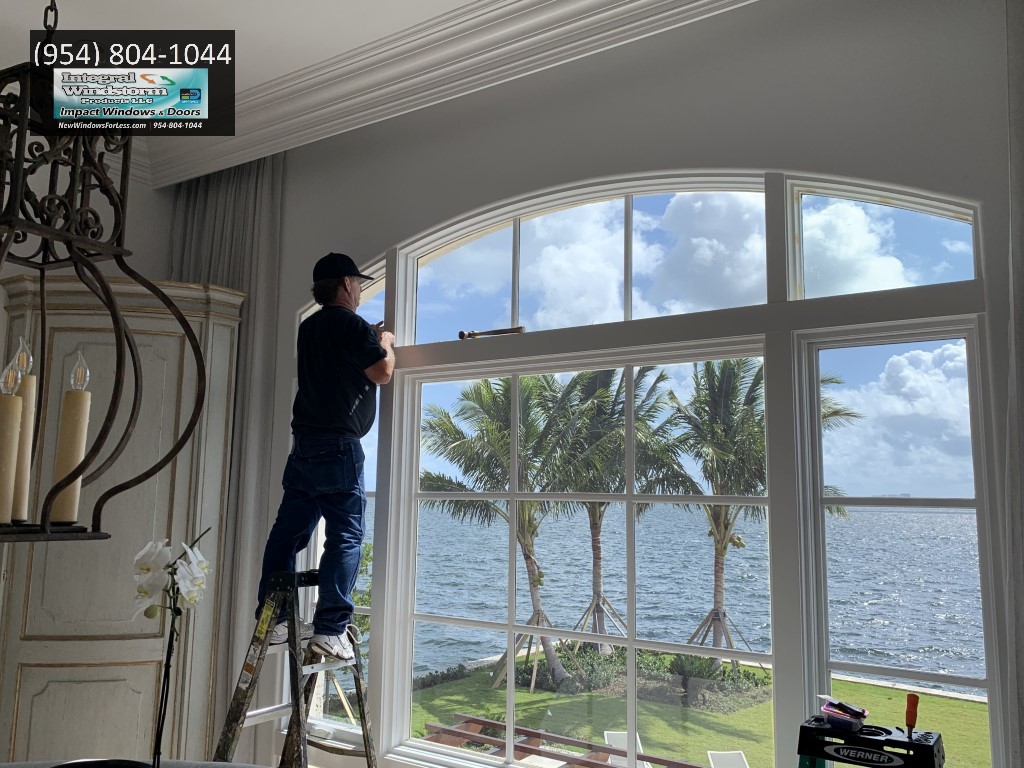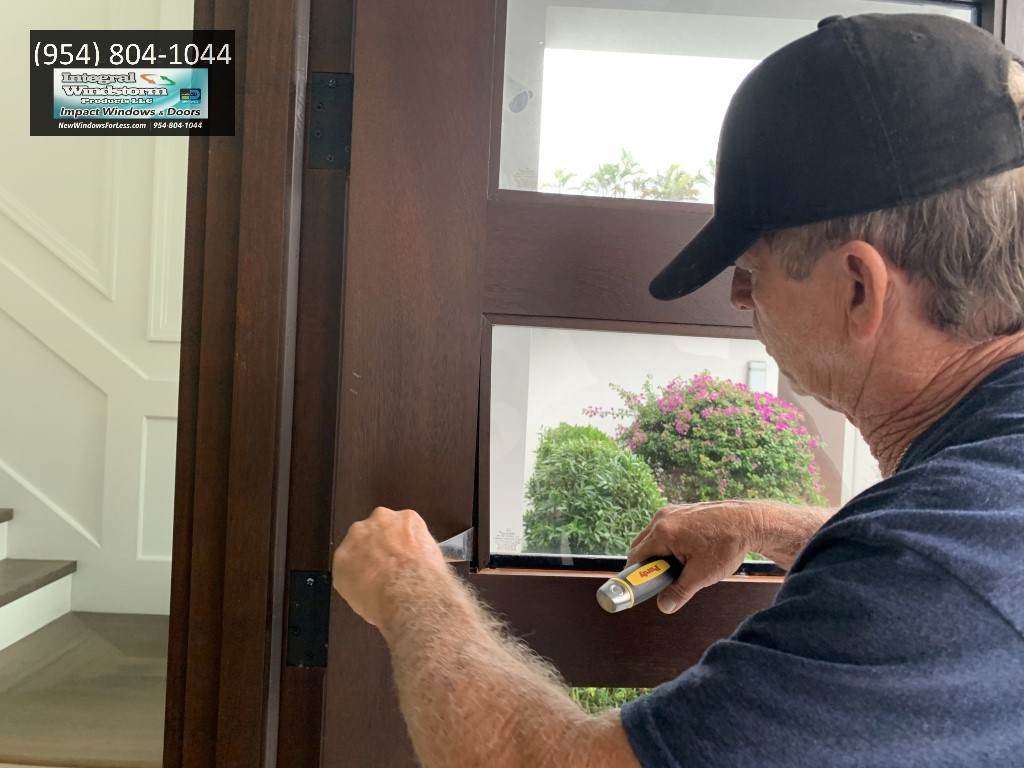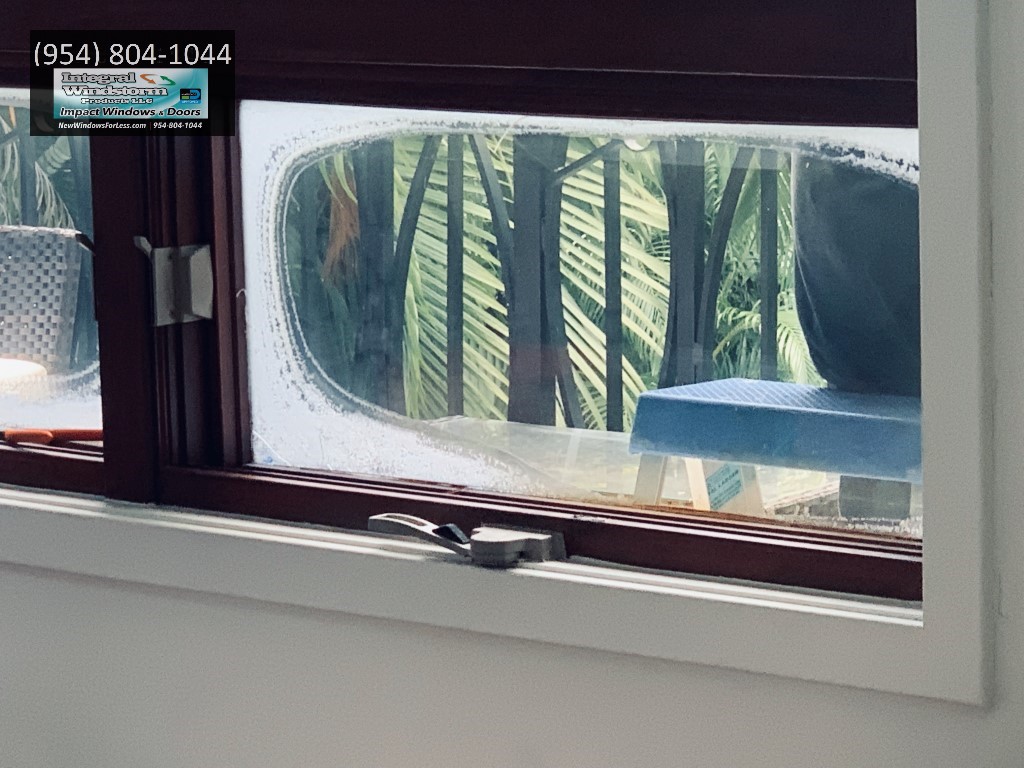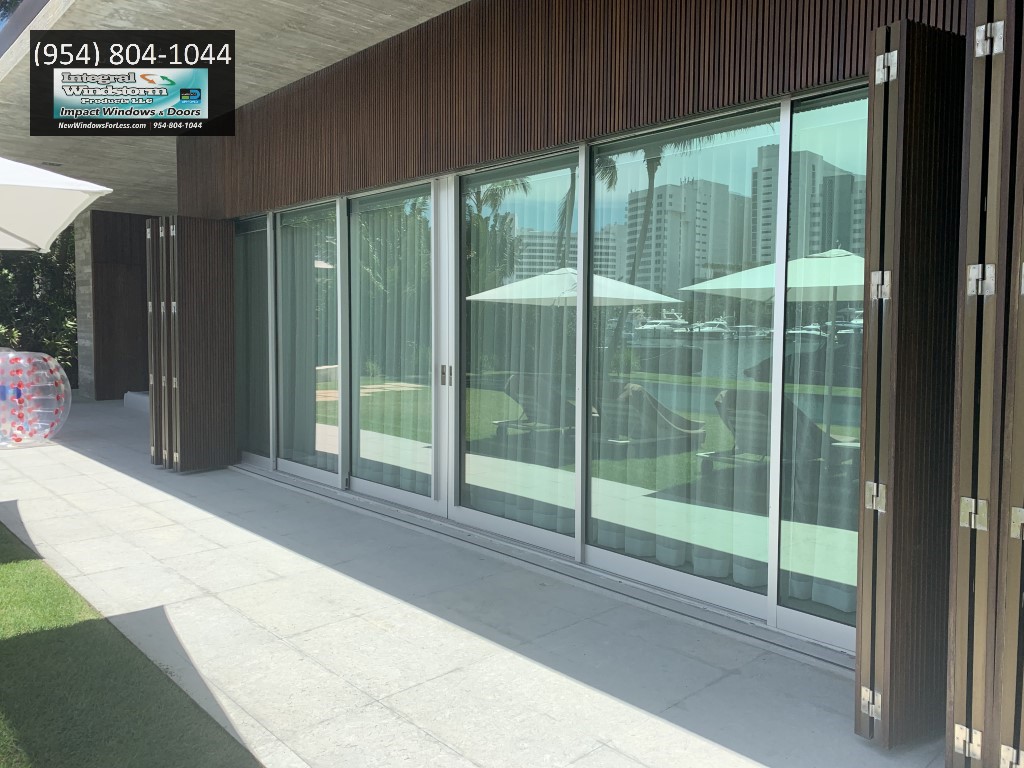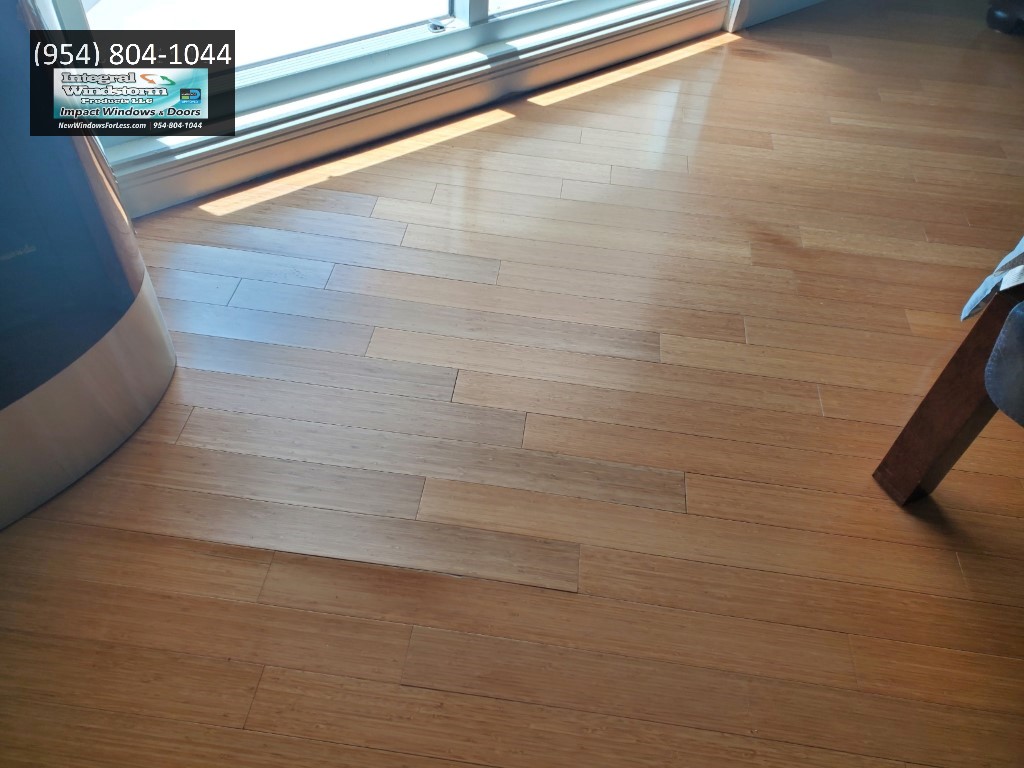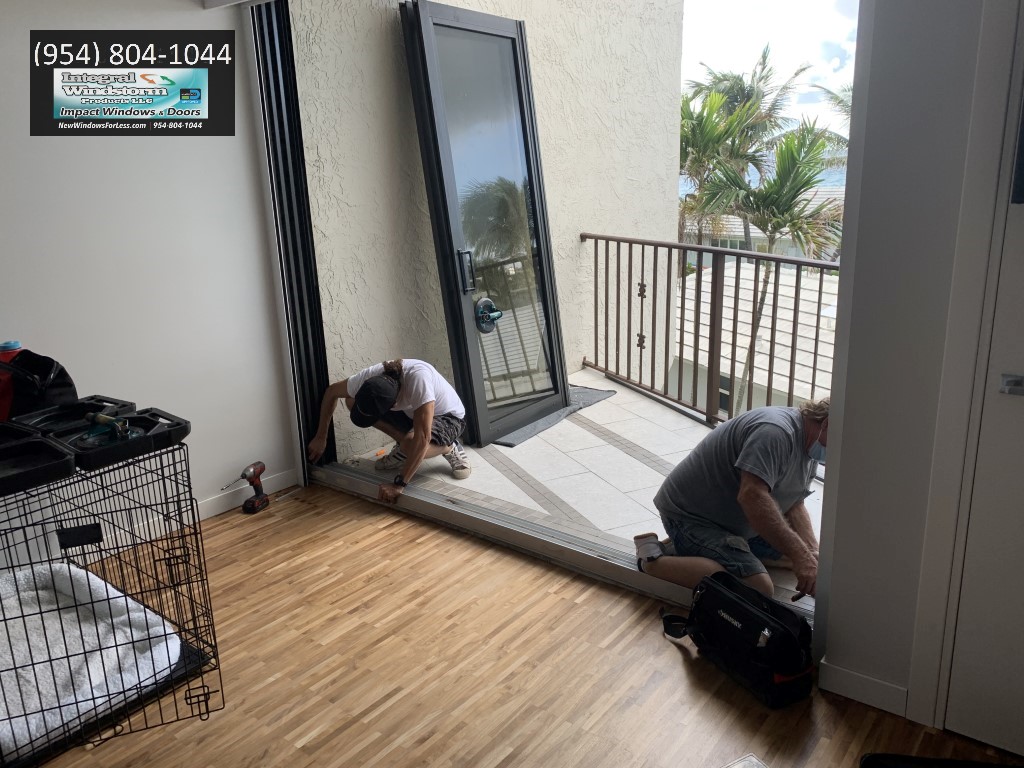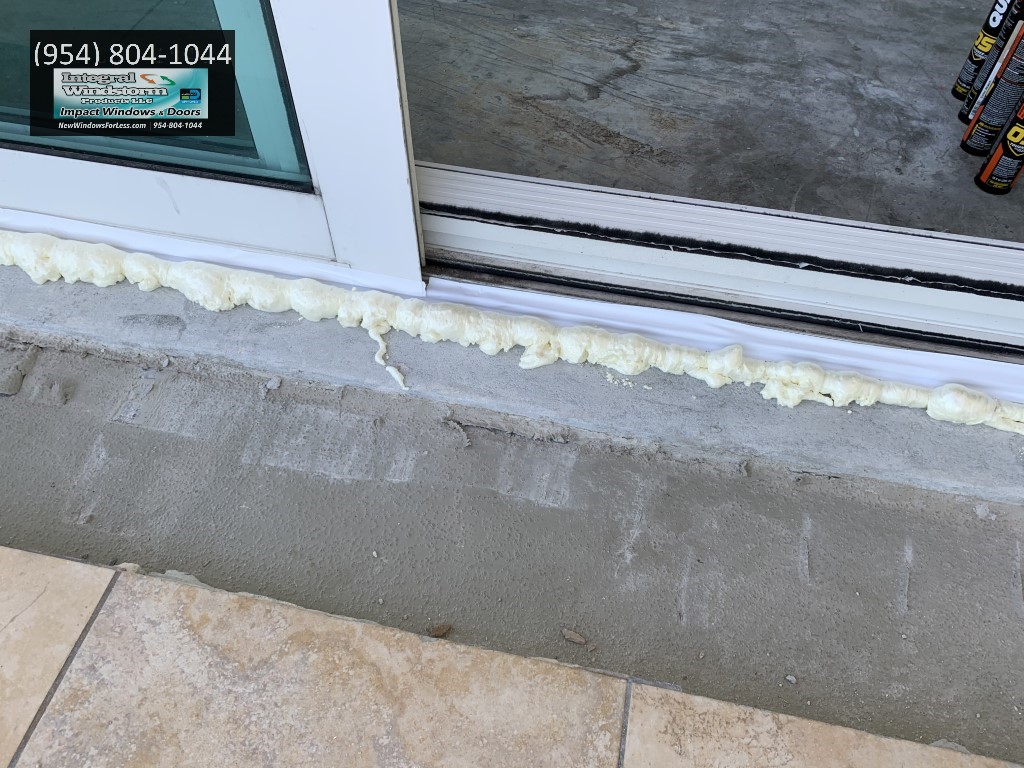South Florida Window & Door Repairs by Integral Windstorm Products. Window and Door Glass Replacement Company. Defective Impact Glass. Foggy Stains on hurricane glass, broken glass replacement by professionals. Weather Shield window and door repair service.
Impact Glass Replacement
Window and Door Leak Repair
Rotten Wood Door Repair
Window and Door Hardware
SOUTH FLORIDA WINDOW AND DOOR REPAIR PROFESSIONALS
Offering The Highest Quality Window and Door Repairs. Glass Replacement, Window Caulking and Rotten Wood Repair Experts

South Florida's Premiere Window and Door Repair Professionals.
South Florida Window & Door Repair by Integral Windstorm Products. We are located in Deerfield Beach and provide window and door repair services in Palm Beach, Broward and Miami-Dade counties. We provide turnkey window and door repair services that may not be offered by any other window repair company servicing South Florida residents.
We understand that replacement of an entire window or door may not be necessary when repairs can be made. We will assess the the damages and determine repair solutions to be made.
We are window and door contractors, certified by the State of Florida, and will not try to sell you new windows and doors for replacement.
We are craftsmen and not salesmen. Many Estate homes we repair have several windows and doors from the same manufacturer. These products are all the same color, style and product series, that match and blend together. Since all the windows and were installed at the same time, the exterior finishes have aged and match all the other surrounding products.
Replacement of damaged or rotten wood window may include replacing other windows so that the entire elevation doesn't look to have been replaced. Some impact rated wood window manufactures have discontinued their classic series design. Getting exact match replacement windows or doors may not be possible if the manufacturer has changed the design or no longer offers that particular product series.
Repair Services We Provide In Broward, Palm Beach and Miami - Dade Counties.
Window and door caulking to stop leaks after hard heavy rain. Cualking around stucco cracks and where algae saturates the stucco. Water leak damage to drywall baseboard and wood flooring from one window leak.
Window Frame Caulking Window Leak Repair Weather Stripping
[smartslider3 slider="4"]
Window Caulking - Waterproofing - Leak Detection
One of the biggest causes for water leaks is water infiltration form your windows. This makes sense due to the amount of windows in the average residential home. The caulking around the windows has simple but very important role to play. It must perform as good or better than the wall surface and the window it is attaching to. If any of these are deficient, the result will be water entering into your home.
Caulking and Sealing Services Offered
Glass leak repair on casement, fixed casement & picture windows.
Glass sealant caulking on French doors, sidelites & sliding glass doors.
Perimeter caulking on storefront window glass and frame perimeters.
Exterior mullion sealing, break metal covers and stone appliques'.
Waterproofing Services Offered
Exterior window and door stucco returns.
Door sill stoops and window sill returns.
Sliding glass door stucco to frame waterproofing
Horizontal stucco beams between French doors and transom windows
Here Are The Main Reasons Why You Have Window Leaks
-
Window Leak Originating From The Window Itself: Window manufacturers must have their products tested for water infiltration under pressure. In order to pass this test, the window has to have several things in place. Frame weather stripping to keep large amounts of water from rushing into the window system. The window design must also use sealants in all the frame joints to keep water from leaking though the joints. Last, they may use a weep system as a secondary catch all, to evacuate the water to the exterior. All of these efforts combined, make a solid product that should perform well.
-
Window Leaks Caused By Installation: With all the effort that has been put into the manufacturer's window, it can leak from the very day it was installed. The window installer has a simple, yet important task to do when installing your windows. First task, the window should be installed Plumb, Level, Square and True. It should operate with ease and be installed according to the manufacturer's specifications. Secondly, all the installation anchors and screws should be sealed properly with the correct sealants. Typically this would be silicone or small gap sealer. Last but not least, the window frame perimeter caulking should be applied around the frames according to the caulking manufacturer's specifications.
-
Window Frame Caulking: The sealant that is applied around your window frame bridges the gap from the wall return and the window frame. Consider it the connective tissue that bonds these surfaces together to keep water out. The window caulking has the most important job and also has the shortest lifespan compared to the window frame and the wall surface. Much the same as windshield wipers on an automobile, their job is very important and the components lifespan is shorter than the automobile itself.
When the window installation crew applies the window perimeter caulking, how do you know if it was applied properly? Did the window installers follow the manufacturer's application specifications? Was the caulking sealant applied to wet, dusty or dirty surfaces? These are some of the factors that can be attributed to why a window's caulking sealant can be the cause for the water leak.
-
Quality Of The Window Sealant: You would be surprised to know what we have encountered that has been used as window caulking. Some window leak projects we have performed used interior grade caulking an exterior grade perimeter sealant. This is a prime example that the window installed or waterproofing company used the wrong material and did not follow the sealants application limitations. The best sealants to use for window frame caulking should be a premium grade polyurethane based exterior sealant. These products are formulated to bond to dissimilar surfaces that have different expansion and contraction movement. Polyurethane sealants perform well when bonding rough surfaces like brick or stucco to the aluminum window frame. Silicone sealants should not be used for this type of application. Silicone should be used when bonding glass to aluminum or where two windows are mulled together.
-
Typical Lifespan Of Window Caulking and Glass Sealants: There is no definitive amount of lifespan years anyone can put a finger on. This varies from house to house. This is can differ due to the exposure of sunlight the window frame is subjected to. It can also be affected by the amount of foliage blocking the sunlight keeping the wall stucco wet for longer periods of time. Since each home's orientation is different, the amount of exposure is hard to calculate. A good recommendation for window caulking replacement in general, is between 8 - 10 years. Some caulking may exceed the mentioned lifespan or be drastically shorter. Homeowners and property managers should evaluate the current condition of the window's caulking yearly and determine if it should be replaced. Any cracks, holes or separation from the window frame should be an indication. If there are tiny cracks leading from the window frame outward to the wall, there is a leak coming from the window perimeter.
-
Tiny Cracks On the Exterior Window Stucco (Spider Cracks): These small cracks in the stucco are a sign there is a window leak must likely originating from the window perimeter caulking. If rain water gets into this location, it saturates the dry stucco under and spreads to surrounding areas under the painted surface of the window return. The trapped water that has saturated the stucco, expands when it is subjected to sunlight or heat after a period of rain. Once the stucco expands, it causes small cracks that ever contract. The spider cracks now allow more water to enter the window perimeter from water / air displacement. The spider cracks should be waterproofed with a liquid flashing, the window caulking should be applied over the liquid flashing to repair the leak.
Rotten wood window sash or wood rot repair on wood weather shield windows. Kolbe window sash repair on casement wood sash. Weather Shield rotten window repair
Wood Rot Replacement Casement Wood Sash Repair Picture Window Wood Repair
Rotten Wood Casement Sash Repair
Rotten Casement Window Sash Replacement and Rotten Wood Repair - Wood Window Frame Wood Rot Repair
If you are contemplating changing your wood casement windows for new ones, call us first if you would be interested in getting them repaired. We will schedule a consultation and inspect the amount of window damage, and get back to you with a repair quote. Many times we see casement windows by Weather Shied, Hurd, Caradco, Kolbe that have wood damage. You would be surprised at the quality repairs that we make, the time and money you would also save opposed to new replacement windows.
Rotten Wood Casement Window Frame Repair
Wood frame jamb rot repair
Wood operator sill cover repair and replacement
Removal and replacement of rotted sill wood
Casement window frame hinge repair
Casement Window Sash & Vent Repairs
Rotten wood replacement on rotten casement sash bottom and glass sticking
Rotten wood removal and replacement. Wood re-enforcement at hardware placement
Custom wood profile milling and precision duplication
Custom match wood profile reproduction, BiltBest Casement Sash Replacements
Here Are Some of The Most Common Reasons Why you May Have Rotten Wood on Your Casement Window Sashes or Frames.
-
Casement Window Frame Rot: Casement window frames are the outer frame that stays attached to the window opening when the casement sash has been cranked open. The part of the window that opens is called the sash or vent. Casement window frame heavily rely on the weather stripping that seals the sash to the frame when the sash is closed. If this weather seal no longer performs the way it should, you will have water entering into wood areas of the window frame. Good weather stripping keep water from getting to the frame wood causing wood rot.
-
Window Frame Weather Stripping: As Mentioned as, Casement weather stripping is important....All weather stripping. Most casement windows have (2) lines of weather stripping that keep the window interior from taking water in. The front line of defense is the usually the outer most exterior line of weather seal that would keep water from getting in between the gap from the sash to the frame. The second line of defense is on the window frame where the sash closes into. This weather stripping is a type of compression weather seal that is compressed when the sash is closed.
-
Installation Holes and Casement Hinge Anchor Holes: All operable casement sashes have a top and a bottom slide hinge, unless it is hinged on the side of the sash. Top and bottom hinges have screws in them to attach to the window frame and sash. These attachment screws can get loose over the years and not seal to the hinge properly. A heavy rain can push water into the screw holes which then will saturate your window frame.
-
Fixed Casement Windows: A fixed casement picture window does not open, but is made so it looks like it does. The casement sash has a gap between the sash and the frame as is typically made the same as an operable window. Over the years, the compression weather stripping shrinks and loses compression on the frame. The sash weather stripping dries and cracks, allowing water to get behind the front line of weather stripping. The best solution to make this situation resilient to water infiltration, is to seal the perimeter of the sash to the frame.
-
Water Entering Between the Glass and the Sash Frame: Several window and door manufacturers used to glaze their windows and doors with a two sided foam glazing tape. This tape was supposed to bond the impact glass to the casement window frame. The problems with this glazing procedure and material were discovered 10 to 15 years later. The black foam tape would dissolve into a black powder. This would leave a direct pathway to the casement sash's wood parts. Several years of this repeated saturation has caused a lot of wood damage.
Rotten wood window sash or wood rot repair on wood weather shield windows. Kolbe window sash repair on casement wood sash. Weather Shield rotten window repair
Wood Rot Replacement Casement Wood Sash Repair Picture Window Wood Repair
French Door Rotten Panel Repair
French Door Rotted Bottom Rail Repair - Door Frame Wood Rot Repair
[smartslider3 slider="3"]
Window Caulking - Waterproofing - Leak Detection
One of the biggest causes for water leaks is water infiltration form your windows. This makes sense due to the amount of windows in the average residential home. The caulking around the windows has simple but very important role to play. It must perform as good or better than the wall surface and the window it is attaching to. If any of these are deficient, the result will be water entering into your home.
Door Panel Wood Rot Repair
Complete rotted wood removal & replacement
Wet and soft wood glass leak repairs
Bottom rail and weather sweep replacement
Wood repairs for Hurd, Weather Shield, Caradco, Kolbe and Sierra Pacific Impact Doors
Rotted Wood French Door Frame Repair
Wood frame jamb rot repair
Wood sill threshold component replacement
Removal and replacement of rotted door sill wood
Door frame hinge placement re-enforcement
Why Do You Have Wood Rot on Your French Doors? Here Are Some Reason Why This Happens.
-
Yearly Maintenance: It is not a bad idea to have a professional service call once every year. Depending on the inspector, what should be looked at is the operation of the door and the condition of all the materials and moving parts. A trained eye should be able to easily spot things that may prevent bigger problems a year later.
-
Hinge Adjustments to Door Panels: Swing door panels should have the hinge screws tighten every once in a while. They should be checked periodically. When the screws start to get loose, The door panel may start to sag and hang differently. Typically the top (2) hinges cause the door to drag or rub the sill. The sagging door panel may allow water to rush in above the door panel and cause a leak. If the door panel is tight to the frame at the bottom, it can trap water from evacuating properly. Trapped water in this area can cause panel and frame rot to the wood areas.
-
Door Frame Jamb/Sill Connection: This area is one of the main causes for jamb tail wood rot. Water entering into this unsealed crevice can can the wood door frame jamb to rot at the bottom of the frame legs. Once this happens, the rotten wood needs to be cut out, completely removed and replaced with new pressure treated wood. If the water has affected the jamb tails on the frame, it may have also caused wood rot damage under the threshold sill.
-
Door Panel Mechanical Joints in the Aluminum Cladding: This is something that never comes into question. Sealants are embedded at these joints when the product is manufactured. This sealant keeps water from entering the joints on the frame and the door panels. After years in the South Florida climate, they will dry and break down. Some customers have had their doors re-painted after the y have been cleaned with a pressure cleaner. This strips the sealant away and leaves the joints open without any sealant. Water infiltration will now be accelerated due to zero sealant to obstruct the water.
-
Water Entering Between the Glass and the Door Cladding: Door glass is installed into the door panels much the same as Casement windows are glazed. Door panels have the glass installed into the door panel with the same materials and sealants as well. Several window and door manufacturers used to glaze their windows and doors with a two sided foam glazing tape. This tape was supposed to bond the impact glass to the casement window frame. The problems with this glazing procedure and material were discovered 10 to 15 years later. The black foam tape would dissolve into a black powder. This would leave a direct pathway to the casement sash's wood parts. Several years of this repeated saturation has caused a lot of wood damage.
-
Weather Stripping and Bottom Sweeps: Weather stripping on doors play a major role into keeping water out the frame. When these are installed into the door frames, they are cut in such a way to allow water to escape at the sill. If the water should get passed the weather stripping, it is deliberately contained in a "raceway" to flow downward then outward from the door frame. Weather stripping does collapse and will not perform as it should. All weather stripping should be checked yearly and replaced as needed.
Stress cracked impact glass. How to replace impact glass? Why does impact glass delaminate? Why are their Bubbles in the glass layers? Fort Lauderdale glass replacement
Foggy Impact Glass Cloudy Hurricane Impact Glass Bubbles in Impact Glass Cracked Glass
Hurricane Impact Glass Replacement
Defective Impact Glass Replacement - Delaminated Foggy or Cloudy Laminated Glass
Glass Delamination and defective impact glass replacement
Do you have air bubbles in your impact laminated glass? How about an area that is cloudy and no longer able to see through? These are the most common occurrences that residential homeowners are experiencing. Fortunately, the impact glass can be replaced without replacing the entire door or window.
Impact Glass Replacement in Aluminum Windows and Doors
Impact glass replacement on PGT door and windows
Fleetwood Sliding Glass Door Glass Replacement - impact rated glass replacement
Delaminated and defective glass with foggy, cracked or cloudy spots
Glass repair for CGI, Marvin and SIW Impact Doors
Wood Window and Door Glass Replacement and Repair
Weather Shield aluminum clad wood windows and door glass
Glass replacement for Peachtree and Hurd windows
Kolbe aluminum clad wood windows and door glass
Caradco Door and window glass repairs
.
..
Reasons Why Your Impact Glass Is Delaminated.
-
When you have a glass leak at the glazing ledge and the glass, water gets in and sits inside the glazing pocket. Once water gets in to this area, it starts to break down the bond in the impact glass layers.
After long periods of time of constant water or moisture intrusion, glass delamination will eventually occur. -
For some reason or another, some types of impact glass just seem to happen on its own. There will be an appearance of a air pocket or a bubble in the middle of the glass. This is not caused by water infiltration due to the location of the delaminated area. This may be caused by excessive heat from the direct exposure to the sun's rays.
-
Some delaminated impact glass just cannot be explained. We have seen where French doors have signs of delamination in the corner areas, in either the top or the bottoms of the glass. Most of these doors are located under a large patio roof and never see direct sunlight.
This is the most confusing type of glass delamination since these windows or doors are not subjected to sun or rain.
-
Another cause for glass delamination is by condensation. This occurs when the interior climate of the home is drastically different from the outdoor temperature. There will be moisture on the inside of the impact glass surface. when this accumulates, it drips down to the inside frame and gets into the glazing pocket.
-
Delaminated glass should be replaced as soon as it is noticed. If your impact rated window or door is still under warranty, you should call them and put in a claim. Check your glass warranty from the manufacturer and make sure you have a viable claim.
-
Glass may be supplied by the manufacturer to you free of cost, but they may not cover labor. Most manufacturers take care of these problems, and others may not. We can re-glaze your windows or doors if that is the case.
Sliding Glass Door Leak and Roller Repair
Frame Leaks - Roller / Wheel Replacement - SGD Glass Replacement
Complete Sliding Glass Door Leak Repairs, Roller Wheel Adjustments, Lock and Glass Replacement
Do you have water leaks on your sliding glass door frame? We have developed a system to repair your patio door frame leaks with a conclusive solution. We seal all the anchor locations and connection joints to keep water out. We also inject polyurethane expanding foam under the sliding door track sill to fill all the voids if necessary.
Having problems locking your sliding glass door? You may need your panel wheels adjusted to align your lock so it will lock securely. We can also replace the lock if it is broken.
Sliding Glass Door Repairs We Offer
Panel Adjustments and Roller Wheel Replacement
Weather Stripping and Weather Seal (Fur Pile) Replacement
Bottom Roller Wheel Repair / Replacement
Lock and Impact Glass Replacement for Fleetwood, PGT, Plaza Sliding Glass Doors
Stainless steel sleeves to repair damaged sill track guide beads
Sliding Patio Door Frame / Sill Leak Repair
Seal all holes and perforations in the bottom sill
Remove all panels and repair the entire door track and sill
Seal all anchors and jamb to sill joint connections
Inject expanding polyurethane foam to sub-sill voids
Frame caulking around perimeters
Waterproof cracked stucco stoop to prevent water infiltration.
.
..
Reasons Why Your Sliding Glass Door Frame Is Leaking
-
Most often we see when a customer has a leak in their sliding glass door frame is because the installer did not seal the frame joint at the time the were assembling the sliding glass door frame. They assemble the frame and install it, then smear sealant on the frame as a topical solution. This is never a good thing. Sealant should be used at the time of assembly of the frame
-
All anchor location where tapcon screws are installed through the sill track. This is very import for these to be sealed properly since these are essentially holes in your bottom sill track. water can easily seep around the edges of the anchor and leak in under the sill track.
-
Hold down clips, bumpers and door stop clips that are attached to the sill track frame need to be sealed, if they are attached with screws that penetrate the sill.
-
Water Leg and connection joints need to have a special sealant that seeps deep into the cracks. This is referred to as small joint sealer. This is a professional grade sealant that is designed for this type of leak prevention.
We First Find The Leak And Identify Where It Is Coming From
Since sliding glass doors and sliding impact windows are heavy, they move along metal tracks fitted to the bottom and top of their frame. To slide the heavy doors along the metal frames, the doors use metal or plastic rollers.
Check to see which door moves and which one is stationary. If you have a problem with water leaking, it will usually be on the bottom track threshold of the non-stationary door. We look to see exactly where the water is coming from and then identify the cause.
Track sill and weep hole systems
Keeping all drainage routes and weep hole clear of debris, is the bst way to insure proper water evacuation.
Clean Your Roller Threshold Track Periodically
Debris can build up in your sliding door track and prevent it from achieving a tight seal. If the tracks are dirty, the doors can become misaligned and water can easily seep into your home.
That’s why it’s so important to keep your tracks free of debris and your bottom roller wheels clean. To clean your sliding track and rollers, attach a thin crevice tool to your vacuum and suck up any major debris. After vacuuming, take a wet paper towel and wipe away any leftover dirt or muck around the wheels or trapped in corners of the door frame sill. Inspect the sealant at the bottom corners of the sill track.
Stainless Steel Track Cover Sleeves
Sometimes your sliding track needs more than a clean. If it’s worn down from years of opening and closing, rusted, or broken, this could cause your door to stick or be susceptible to water intrusion. This is the best way to repair a sliding glass door track without having to replace the entire door.
Adjust Your Wheels/Rollers
If your sliding door’s wheels are off-balance, you may notice that your door requires more tension to slide open and close. This could also be causing jamming and leaving gaps for water to enter.
Open your door a crack and look at the gap between the door and the frame. Is the gap at the top of your door wider or skinnier than the gap at the bottom? If so, then you will need to have your door panels adjusted to properly align with the frame side and other door panels.
Other Common Issues that Cause Water Intrusion through Sliding Doors
Here are a few other reasons you may have moisture entering your sliding doors:
-
A bent track, which could be hammered out (if aluminum) or replaced (if plastic or un-savable metal)
-
Broken glass, which can be sealed or replaced depending on the extent of the damage
-
Worn flashing or caulking around the door, which are located both on top and on the bottom of the door
-
A poor/ or blocked weep system routing, which can cause an abundance of water to pool around the base or drip down your door
-
Frame track holding water due to poor installation, which can cause the frame to always hold water. Track should have a slope to drain water from the sill so the water drains outward.
3. Weather Stripping Replacement on Interlocking Panel Stiles
Even though well-maintained sliding glass doors usually don’t have water intrusion problems, consider having the weather stripping replaced to prevent the leaks caused by driving rain.
We are very experience in finding and repairing sliding glass door frame leaks.
Due to Florida hurricane codes, sliding doors must have a 1.5 - 3.5 inch water threshold dam. With such rigorous requirements, if you are still finding water intrusion after general maintenance and need weather stripping installation, your sliding glass doors may not be properly sealed with a premium exterior grade sealant.
If the door was installed directly on the concrete slab, water could be seeping under the doorframe. If the door is installed at the edge of the roof overhang, water could be leaking from the top of the sliding glass doors.
As you can see, there are many reasons you may be experiencing water leakage from your sliding glass door. Sometimes, the best thing to do is have your doors inspected by a professional that is experience with sliding glass door leaks, who can spot the problem quickly and get you the long-term fix you need for moisture prevention. While sometimes repairs are quite effective, in other instances, it might be time for a full door replacement.
If you’re struggling to manage your water intrusion problems in the southwest Florida home, contact the experts at Storm Solution for a professional onsite sliding glass door leak repair consultation
-
